The History of Irish Whiskey
Irish whiskey is one of the oldest distilled drinks in the world, with a rich history that spans centuries. Here's a timeline highlighting some of the key moments in the history of Irish whiskey. There’s loads of taxes in here, but that’s just the history of whiskey for you... You should recognise some big names along the way too…
Reading time: 10 minutes
Author: Master of Malt

1000-1200
The first distillers
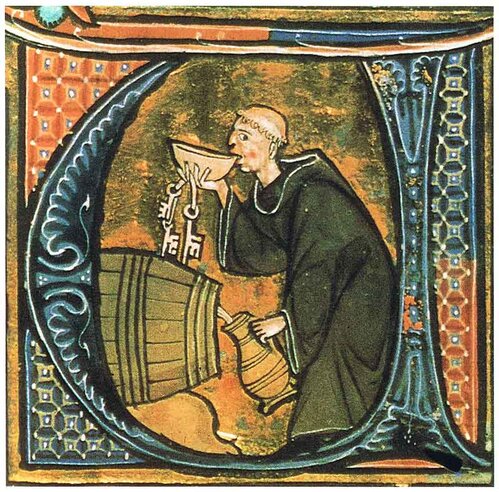
Historical records suggest that the practice of distilling spirits arrived in Ireland with the Norman invasion in the 12th century, though it's believed that the Irish were distilling whiskey in some form before this. Monasteries, lacking the vineyards and grapes of the continent, turn to fermenting grain mash to create medicinal spirits.
1405
The Annals of Clonmacnoise
The earliest known written record of whiskey in Ireland comes from the Annals of Clonmacnoise, which mentions the death of a chieftain from "taking a surfeit of aqua vitae" at Christmas.
1556
Whiskey production begins
The English Parliament pass the Act of Parliament in Drogheda, one of the first written records of whiskey production in Ireland. It made it illegal to produce aqua vitae without a license from the Lord Deputy, except for peers, gentlemen, and the freemen of the larger towns of Ireland. Beyond the Pale, the parts of Ireland controlled by the British, this has little impact.
1600-onwards
Whiskey comes to America
European colonists, including Irish immigrants, begin to arrive in America. They bring the practice of distillation with them.
1608
Old Bushmills Distillery
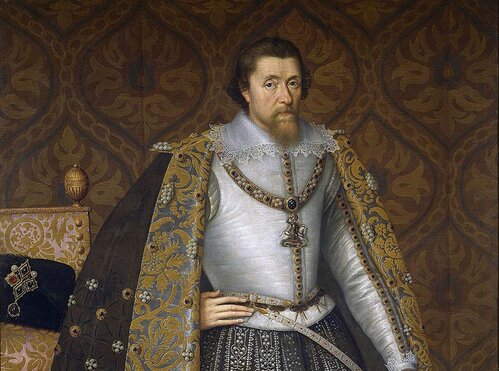
The Old Bushmills Distillery in County Antrim is licensed by King James I, making it (according to its claims) the world's oldest licensed distillery. However, the Bushmills Distillery, as it is known today, was officially registered and began operations in 1784. The date of 1608 is significant because it marks the early recognition of distilling practices in the region of Bushmills, Northern Ireland, but it does not mean the distillery in its current form has been operational since then.
1661
Tax on Irish Whiskey
On 24 December 1661, a tax on whiskey is introduced in Ireland to curb illegal distilling. Irish whiskey became split into 'parliament whiskey' and illegal poitín. But distillers didn’t have to register and the law was full of loopholes, meaning illicit distillation was rife.
1757
The Kilbeggan Distillery
The Kilbeggan Distillery, recognized as one of the oldest licensed distilleries in Ireland, was founded in 1757.
Peter Roe would also purchase a small distillery on the north side of Thomas Street, two years before Arthur Guinness would sign the famous 9,000-year lease for St James's Gate Brewery.
1759
Consistency of ingredients
Parliament passes an act to prohibit distillers from using any ingredient except malt, grain, potatoes, and sugar. This is in response to the booming but unregulated industry which was leading to wild disparities in quality.
1761
Whiskey registration
Registration to produce whiskey stops being voluntary and requires the payment of tax. Once again, many distillers go underground and create whiskey illicitly.
1779
Irish legal distilleries take a hit
Lord North's administration in London revises the excise system from taxing the volume of spirits to the distillation equipment. Legal distilleries in Ireland went from 1,228 to just 246 within a year, as operations went underground.
The remaining lawful distilleries struggle. They expedite distillation by increasing the heat, which causes problematic frothing. Adding soap combats this, but adversely affects the whiskey's taste, earning it the nickname 'gut rot'. Fines and taxation further burden the poorest communities, while illegal distillers produce higher quality poitín.
1780
John Jameson
A lawyer from Alloa in Scotland who married into the Haig family decided to have a go at founding his own distillery on Bow Street in Dublin. His name is John Jameson (1740 – 1823). Not sure how successful he was.
1782
The first Teeling Distillery
The ancestor of the current owners of Teeling Distillery, Walter Teeling, opens his distillery on Marrowbone Lane.
1785
The Malt Tax
The Malt Tax is introduced, meaning distilleries pay duty on malt as well as spirit. In response, whiskey makers favour mash bills that contain unmalted barley, a forerunner to the unique Irish style of whiskey called single pot still.
1822-23
The 1823 Excise Act
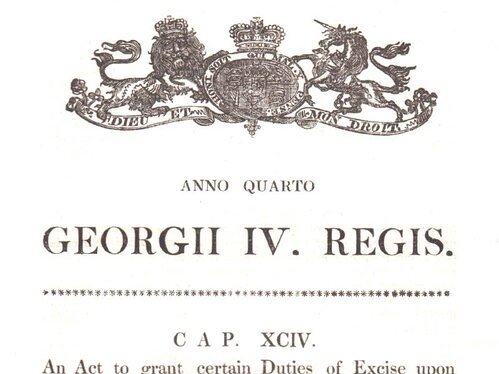
An excise officer in Donegal records at least 800 illegal stills on the Inishowen peninsula alone. His name is Aeneas Coffey. The number of registered distilleries is 40, which halves by the next year. In 1823, the 1823 Excise Act meant distillers would only pay duty on what they create so licensed distilleries go up. By 1835, there’s 93. Also, at this point, the largest pot still in Ireland has a capacity of just 750 gallons (3400 litres). That’s important for the next point.
1825
The world's largest pot still
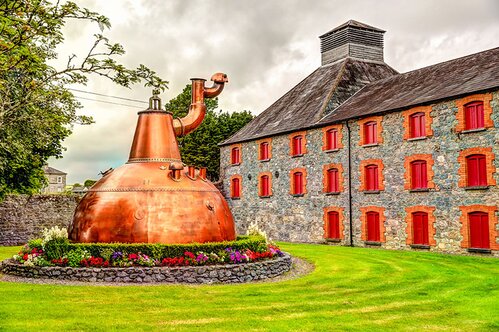
On 20 December 1825, Lord Midleton sold his property to brothers James, Daniel, and Jeremiah Murphy (the same family of Murphy’s Irish Stout fame) for £4,000, which they converted into a distillery. They install a mammoth 31,618 gallon (nearly 144,000 litres!) pot still, which remains the largest ever built and was so large the distillery was built around it. Remember when 750 gallons was big?
1831
The Coffey still
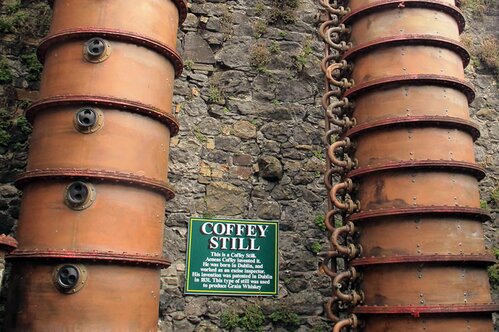
Former excise officer Aeneas Coffey patents the Coffey still after inventing a “continuous still”, a method that allows distillers to produce a greater volume of whiskey, more efficiently, and at a lower cost. Response in Ireland is mixed. Within a decade there are 13 stills in operation in Ireland compared to 2 in Scotland, but the ‘Big 4’, John Jameson, William Jameson, John Power, and George Roe, snub the still saying its quality was inferior to that of a pure pot still whiskey. Coffey leaves for the increasingly more welcoming markets of Scotland and England.
1830-1840s
Temperance and famine
The Temperance Movement of the 1830s is followed by the potato blight and the devastation of the Great Famine of the 1840s. Over a million people die and at least 2.1 million people leave. Among the devastation is the reduction of a domestic market for whiskey, but that doesn’t seem so important anymore, does it?
1860s
Railways open
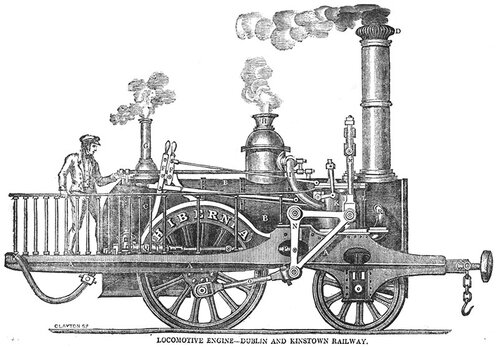
The first railway in Ireland opened in 1834 and by the 1860s a national rail network was transporting goods from Midleton in the south to Bushmills in the north.
1863
Phylloxera
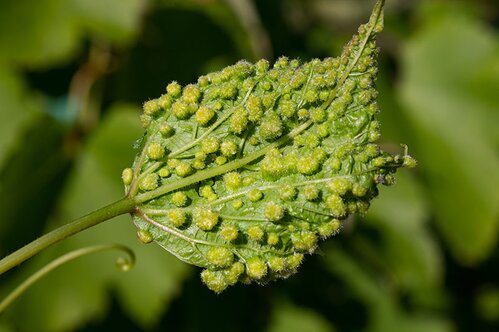
Phylloxera, an aphid-like insect native to North America, is first identified in Europe. In France, within a few decades, just under half of all vineyards were destroyed (almost 2.5 million ha), devastating the wine and brandy industries. The Irish whiskey industry is well placed to fill the void…
1867
James Murphy's big idea
James Murphy (now head of Midleton), pitches the amalgamating of the operations of several local distilleries and in 1867, the Cork Distilleries Company (CDC) is formed from four Cork distilleries: North Mall, The Green, Watercourse and Daly's. A year later Midleton Distillery joined the fold.
1878
Truths about whiskey
The big Dublin distillers jointly publish a pamphlet entitled Truths about Whisky, decrying the output of Coffey stills as not fit to be whiskey. "Good, bad or indifferent; but it cannot be whiskey, and it ought not to be sold under that name".
1887
Whisky Distilleries book
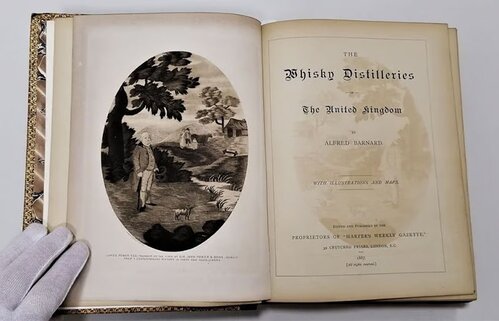
Author Alfred Barnard publishes his famous 1887 book The Whisky Distilleries of the United Kingdom, which notes 28 distilleries in operation in Ireland.
1904
No more Coffey stills...
The senior manager of Ireland's largest rural distillery, Allman's of Bandon, outright bans the introduction of Coffey stills at his distillery in the face of opposition from a director.
1909
To still or not to still?
A Royal Commission is established to investigate and report on the use of Coffey stills, which are used to create 60% of all whiskey produced in Britain and Ireland. Traditionalists argue that only spirits produced in pot stills should be considered ‘true’ whiskey, but the commission declares that whiskey could refer to the output of either Coffey or pot stills.
1918
World War 1
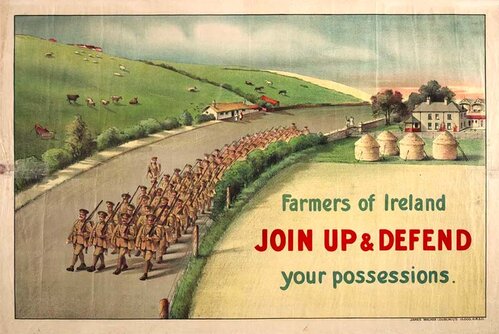
The First World War, Spanish influenza, and a coal shortage have a devastating impact on the industry.
1920s
Irish Civil War
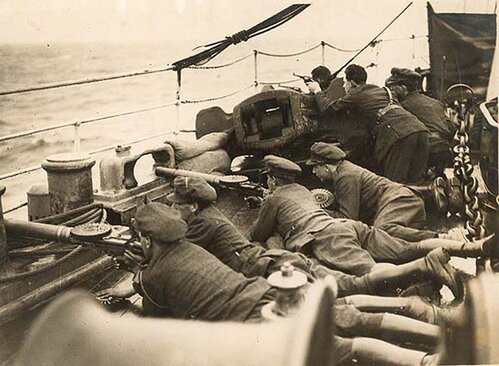
The Irish War of Independence and subsequent civil war further disrupted whiskey production and export.
1920-1933
Prohibition
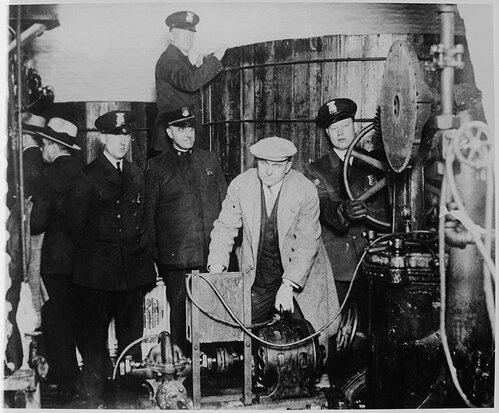
Prohibition in the United States is established. Irish whiskey had accounted for more than 60% of whiskey sales in the US in the 1800s, so the loss of the market was huge.
Protectionist policies introduced by the Irish Free State government, which significantly cap whiskey exports in the hope of taxing domestic consumption, play a part, as does the widespread counterfeiting of Irish whiskeys in America and Britain. Combine that with over-expansion and mismanagement at several Irish distilleries and the Irish whiskey industry is in terminal decline.
In the early 20th century, Scotland surpassed Ireland to become the world's largest whiskey producer.
1966
Irish Distillers
With only a handful of distilleries clinging on, John Jameson, Powers, and the Cork Distilleries Company decide to do something drastic and amalgamate their operations under the name of Irish Distillers. They close existing facilities and concentrate all operations in a new purpose-built facility to be constructed beside the Old Midleton Distillery in County Cork.
That distillery today is home to many Irish whiskeys such as Jameson, Powers, Paddy, Redbreast, Midleton Very Rare, Method & Madness, and the Spot range.
1968
Jameson Irish Whiskey
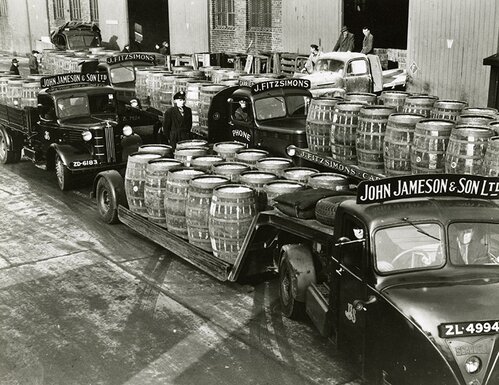
Jameson Irish whiskey is changed from a single pot still to a more accessible, affordable blend.
1970
Dublin decline
On 5 June 1970, the last drops of pot still whiskey were distilled at the Jameson Distillery in Bow Street, ending nearly 200 years of whiskey production in Dublin.
1972
Bushmills joins the gang
The only other remaining Irish operation, Bushmills, joins Irish Distillers. There are only two distilleries producing whiskey in Ireland and they are both owned by the same company.
1984
Midleton Very Rare
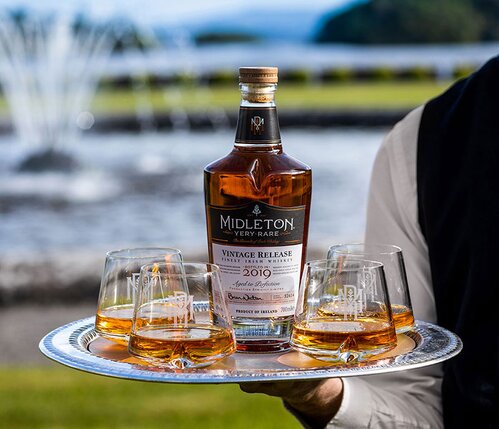
The first Midleton Very Rare is launched, a reminder that great new Irish whiskey can still be made.
1987
Cooley Distillery opens
Years of monopoly is smashed when Cooley Distillery is opened by John Teeling.
The new distillery acquires the assets of Kilbeggan distillery, allowing Cooley to relaunch whiskeys under the Kilbeggan and Locke's Whiskey brands.
1988
Irish Whiskey boom
Pernod Ricard's takes over Irish Distillers, bringing increased funding and marketing into Irish whiskey. Over the next three decades, Irish whiskey became the fastest growing spirit in the world.
1991
Redbreast Whiskey launches
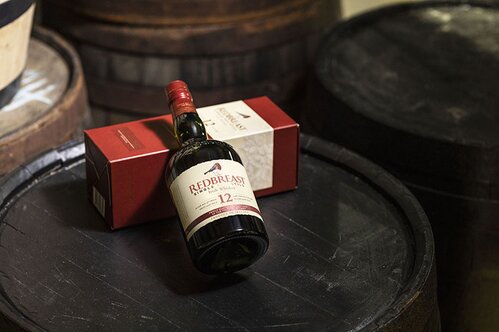
In December, Redbreast was relaunched by Irish Distillers after nearly a decade of absence. Whiskey writer Michael Jackson describes it as "traditional Irish pot-still at its richest" and says that “for some lovers of this style, Redbreast approaches perfection".
1997
Old Jameson Distillery
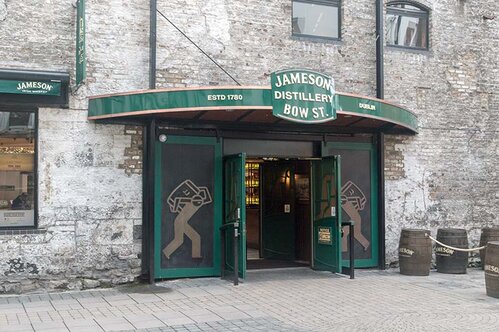
The Old Jameson Distillery on Bow Street was reopened as a visitor centre in 1997. It received further upgrades following a major renovation in 2007, and a further $12.6 million of investment that was concluded in March 2016.
2005
Diageo take-over
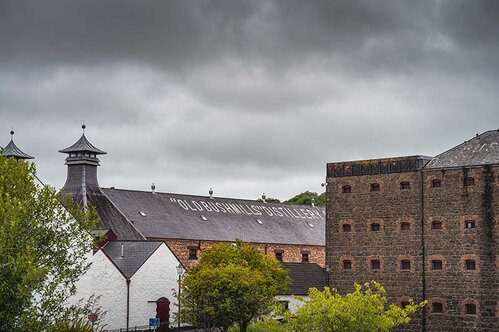
Bushmills Distillery was bought by Diageo for £200 million in June.
2010
Kilbeggan re-opens
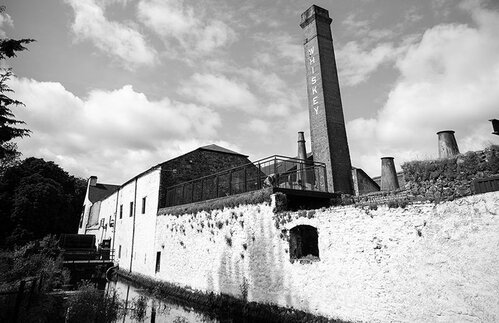
Kilbeggan Distillery, closed since 1954, is reopened fully.
2012
Suntory acquires Cooley
Beam Inc (now Beam Suntory) buys Cooley Distillery
2014
EU protection
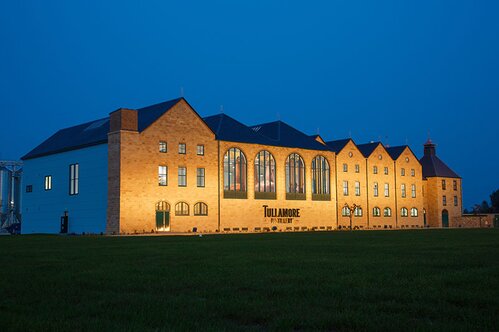
The Department of Agriculture creates a technical file for Irish whiskey, giving Irish whiskey a protected European Geographical Indication (GI).
In September, the new Tullamore Distillery opened, returning production of Tullamore D.E.W. to Tullamore after a break of sixty years.
In November, Diageo traded the Bushmills brand with Proximo Spirits in exchange for the 50% of the Don Julio brand of Tequila that it did not already own.
2015
The Teeling Distillery
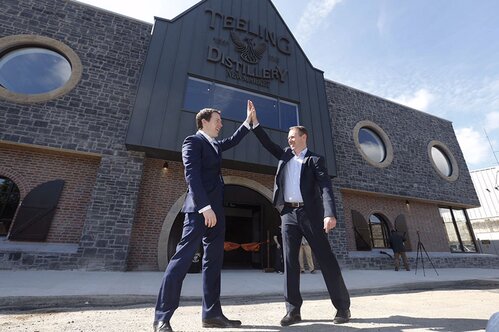
Jack and Stephen Teeling opened Teeling Distillery, the first new distillery built in Dublin city for over 125 years.
Great Nothern, Ireland’s largest independent distillery, is opened by John Teeling (Jack and Stephen’s dad, good year for the family), founder of the Cooley Distillery.
Louise McGuane founded J.J. Corry, the first new Irish whiskey bonder in over 50 years.
Mark Reynier, formerly the co-owner of Bruichladdich, founded the Waterford Distillery with a focus on terroir-driven whiskey.
2019
Whiskey Tourism
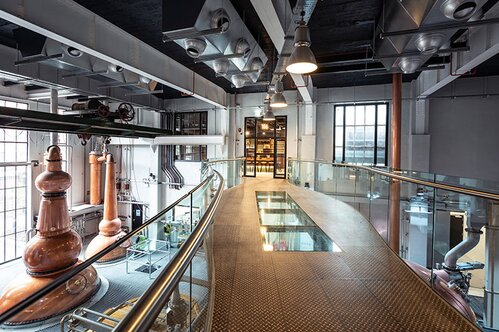
Whiskey tourism in Ireland draws a still record peak of 1.02 million visitors.
Roe & Co Distillery opened in June, located in a refurbished building which formerly housed the power station of the Guinness Brewery alongside the site of George Roe's original Thomas Street Distillery.
2022
Present day (almost...)
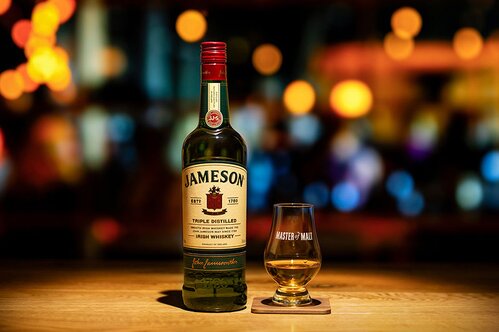
Ireland is recorded as having 42 working whiskey distilleries.
The Irish Whiskey Association (IWA) reports a 425% increase in visitors to Ireland’s whiskey distilleries to 677,000 visitors.
Jameson sells 10m cases of whiskey.

Learn more about Irish Whiskies in our guides
Whisky guides
Irish Whiskey on the blog
Visit our blog to discover new Irish Whiskey reviews, features and distillery spotlights too.
Explore more
Our authors
Sign up to our newsletter
Special offers, recommendations and expert advice to your inbox! Unsubscribe at any time.
I agree to the Privacy Policy
















